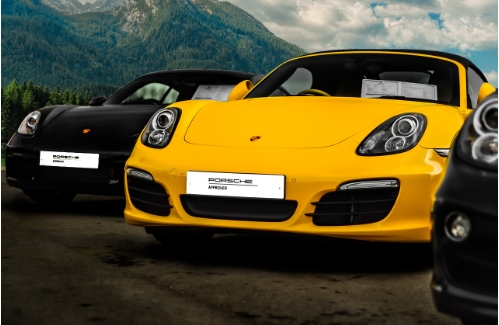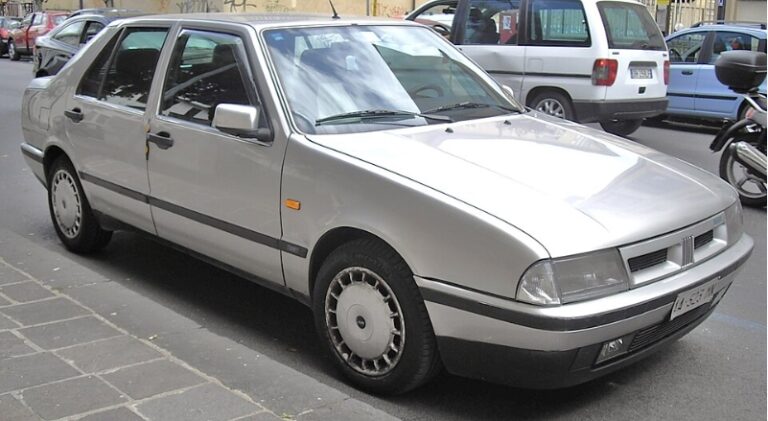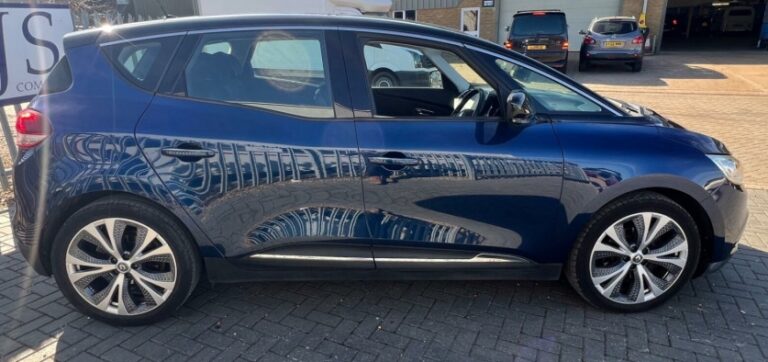The Renault Talisman: A Chronicle of Ambition and Evolution
In the landscape of the mid-2010s automotive world, the D-segment—the realm of the large family saloon and estate car—was a battlefield dominated by established German titans like the Volkswagen Passat and premium offerings from BMW and Mercedes-Benz. For France’s Renault, this segment had become a perplexing challenge. Their outgoing Laguna was a competent car but lacked the aspirational quality to truly trouble the class leaders, while the larger, Korean-built Latitude was a niche product that failed to capture the European imagination. Renault needed a reset; a single, bold statement to replace both cars and reclaim its status as a builder of elegant, comfortable, and technologically advanced large cars. That statement was the Renault Talisman.
Unveiled to the world at the 2015 Frankfurt Motor Show, with production commencing later that year for the 2016 model year, the Talisman was more than just a new car; it was the flagship of a new design philosophy under the stewardship of Laurens van den Acker. It aimed to blend sensuous French design with a level of perceived quality and technological sophistication that could stand shoulder-to-shoulder with its German rivals. Its story, from its ambitious launch to its quiet departure, is a fascinating case study of a superb car caught in the crosscurrents of a rapidly changing market.
The Grand Debut: A New Era (2015 – 2019)
The Talisman launched with two distinct body styles: a sleek four-door Saloon (Berline) and a cavernously practical five-door Estate (known as the Grandtour). From the outset, its design was its most potent weapon. The front was dominated by an assertive, chrome-laden grille proudly displaying a large Renault diamond, flanked by distinctive C-shaped LED Daytime Running Lights that swept down into the bumper. This became a signature of Renault’s range, but it began with the Talisman and Mégane. The car’s profile was long and low, with muscular haunches over the rear wheels giving it a poised, premium stance. The rear was equally unique, with slender tail lights that stretched inwards, almost meeting at the central logo.
Inside, the cabin was a significant leap forward from the Laguna. The design was clean and modern, centered around a portrait-oriented touchscreen for the R-Link 2 infotainment system. The objective was clear: reduce button clutter and create a tech-forward ambiance. Renault also focused heavily on comfort, with wide, supportive seats that, on higher trims, featured massage, heating, and ventilation functions.
.

.
Initial Trim Levels and Powertrains
Renault structured the Talisman’s range in a clear hierarchy, designed to cater to everyone from the fleet manager to the discerning private buyer seeking luxury.
- Life: The entry-level model was a functional, business-oriented trim. It typically featured 16-inch steel or basic alloy wheels, manual air conditioning, a standard DAB radio with Bluetooth, cruise control, and the signature LED daytime running lights. It provided the core Talisman experience without the technological frills.
- Zen: This was the volume-selling mid-range trim. The Zen grade represented a significant step up in comfort and technology. It added features like 17-inch alloy wheels, the 7-inch portrait R-Link 2 touchscreen with satellite navigation, dual-zone climate control, automatic headlights and wipers, parking sensors, and Renault’s Multi-Sense system. Multi-Sense allowed the driver to alter the car’s characteristics (engine response, steering weight, ambient lighting, and on certain versions, damper settings) through modes like Eco, Comfort, Neutral, Sport, and a customizable Perso mode.
- Intens: Positioned as the premium core model, the Intens trim level brought a touch of luxury and advanced technology. It typically upgraded to 18-inch alloy wheels, the larger 8.7-inch R-Link 2 touchscreen, full Pure Vision LED headlights, a reversing camera, and a suite of advanced driver-assistance systems (ADAS) like lane departure warning and traffic sign recognition. The interior was also uplifted with part-leather upholstery and enhanced ambient lighting.
- Initiale Paris: This was the pinnacle of the Talisman range, a sub-brand that Renault used to denote its most luxurious offerings. An Initiale Paris model was a true flagship. Externally, it was distinguished by unique 19-inch diamond-cut alloy wheels and exclusive “Initiale Paris” badging. The interior was transformed with full Nappa leather upholstery (available in black or a graded grey), power-adjustable heated and massaging front seats, a premium Bose surround sound system, and laminated side windows for improved acoustic comfort. Critically, the Initiale Paris trim came standard with two of the Talisman’s most sophisticated technologies: 4CONTROL four-wheel steering and active damping. The 4CONTROL system turned the rear wheels slightly in the opposite direction to the front wheels at low speeds for enhanced agility (reducing the turning circle to that of a smaller Clio), and in the same direction at higher speeds for superior stability and cornering prowess.
The initial powertrain lineup was focused heavily on efficient diesel engines, reflecting the market demands of the time.
- Diesel (dCi): The range included a 1.5-litre dCi 110 (110 hp), a 1.6-litre dCi 130 (130 hp), and a range-topping 1.6-litre twin-turbo dCi 160 (160 hp). The 110 and 130 could be paired with a 6-speed manual or a 6-speed EDC (Efficient Dual Clutch) automatic, while the 160 was exclusively mated to the 6-speed EDC.
- Petrol (TCe): For petrol buyers, there were two 1.6-litre turbocharged TCe engines, developed by Renault Sport, offered in 150 hp and 200 hp outputs. Both were paired exclusively with a 7-speed EDC transmission.
The Mid-Life Evolution: The 2020 Facelift
By 2020, the automotive world had shifted. The dominance of the SUV was undeniable, and emissions regulations were tightening. To remain competitive, the Talisman received a thoughtful and comprehensive mid-life update. The facelift, revealed in February 2020, focused on refining the design, overhauling the interior technology, and modernizing the powertrain lineup.
Exterior and Interior Refinements
Externally, the changes were subtle but effective. The grille was updated with a new chrome pattern, the front bumper was redesigned for a more sophisticated look, and full LED headlights with a new light signature became standard across the entire range. At the rear, the lights also became full LED units and incorporated dynamic, scrolling indicators.
The most significant changes, however, were inside the cabin. Renault listened to criticism of the previous infotainment system and the over-reliance on the touchscreen for basic functions.
- New Infotainment and Display: The R-Link 2 system was replaced by the much faster and more intuitive Easy Link system, housed in a new 9.3-inch portrait touchscreen on higher trims. Crucially, a set of physical piano-key-style buttons and rotary dials for the climate control were added below the screen, a major ergonomic improvement.
- Digital Cockpit: A new, fully configurable 10.2-inch digital instrument cluster replaced the old analogue dials, allowing for customization and the display of navigation information directly in the driver’s line of sight.
- Enhanced ADAS: The Talisman’s safety credentials were bolstered with the introduction of the Highway & Traffic Jam Companion. This Level 2 autonomous driving system combined adaptive cruise control with lane centering assist, allowing the car to manage its speed, braking, and steering in traffic jams and on motorways.
Updated Trim Levels and Powertrains
The trim structure was largely maintained but enhanced with the new features. For instance, the Zen trim now inherited more equipment that was previously reserved for the Intens model.
The engine range was overhauled to meet the latest Euro 6D emissions standards and improve performance.
- New Petrol (TCe): The old 1.6-litre units were replaced. A new 1.3-litre TCe (co-developed with Daimler/Mercedes-Benz) was introduced in 140 hp and 160 hp forms. At the top of the range, a powerful 1.8-litre TCe engine, famously used in the Alpine A110 and Mégane R.S., was offered with 225 hp. All petrol engines were paired with a 7-speed EDC transmission.
- Updated Diesel (Blue dCi): The diesel lineup was also updated. A new 1.7-litre Blue dCi engine was offered with 120 hp and 150 hp, mated to a 6-speed manual gearbox. For those wanting an automatic, a more powerful 2.0-litre Blue dCi was available in 160 hp and 200 hp outputs, exclusively paired with the 6-speed EDC.
The Final Chapter and Legacy (2020 – 2022)
Despite the comprehensive facelift that made the Talisman a more compelling product than ever, it could not defy market gravity. The inexorable consumer pivot towards SUVs and crossovers had decimated the D-segment. Families who once would have chosen a Talisman Grandtour were now buying a Renault Koleos or Kadjar. Corporate fleets, once the bedrock of this segment, were also diversifying.
Sales, which had never quite reached the levels of the Passat or Mondeo, continued to dwindle across Europe. Renault began to streamline its operations, focusing on its most profitable segments: small cars and SUVs. In a move that saddened automotive purists but surprised few industry analysts, Renault quietly ceased production of the Talisman in early 2022. There was no direct successor announced, marking the end of a long lineage of large Renault saloons.
A noteworthy addendum to the Talisman’s story is its South Korean counterpart, the Renault Samsung SM6. Launched in 2016, the SM6 was essentially a rebadged Talisman saloon built in Busan. Interestingly, it was a tremendous commercial success in its home market, often outselling its direct rivals and proving that the car’s fundamental formula of elegant design and comfort could be highly successful in the right market conditions.
In conclusion, the Renault Talisman’s production run from late 2015 to early 2022 marks a distinct and ambitious chapter in the company’s history. It was a car born from a desire to compete at the highest level, armed with a stunning design, innovative technology like the 4CONTROL system, and a level of comfort that honored its French heritage. While it may be remembered as a commercial “what if,” it stands as a testament to Renault’s ability to create a truly desirable and high-quality vehicle. For those who own one, it remains a handsome, capable, and uniquely elegant machine—a final, graceful bow from the era of the great French saloon (sedan).







